Fixing windows.
Hi Reggie,
I had windows put in 20 years ago, but it appears they were installed incorrectly. To fix, I contacted 3 different contractors and got 3 different answers. From reading your Stucco News, you know what you're doing so I'd put my trust in you. I would like to get your advice on how to approach the problem. I'm in California and I don't think you would fly out to do this job, so what I'm willing to do is pay you for remote consultation. I'll attach just a couple photos for now. I can give more pics and details if this works for you. I'm willing to pay for your expert advice, just let me know some price.
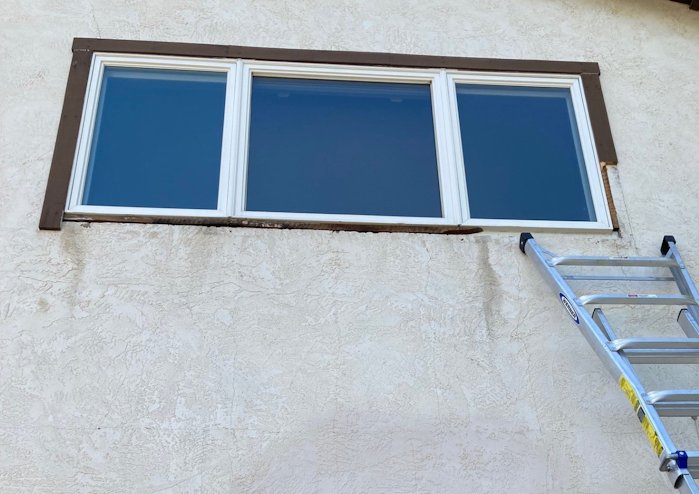
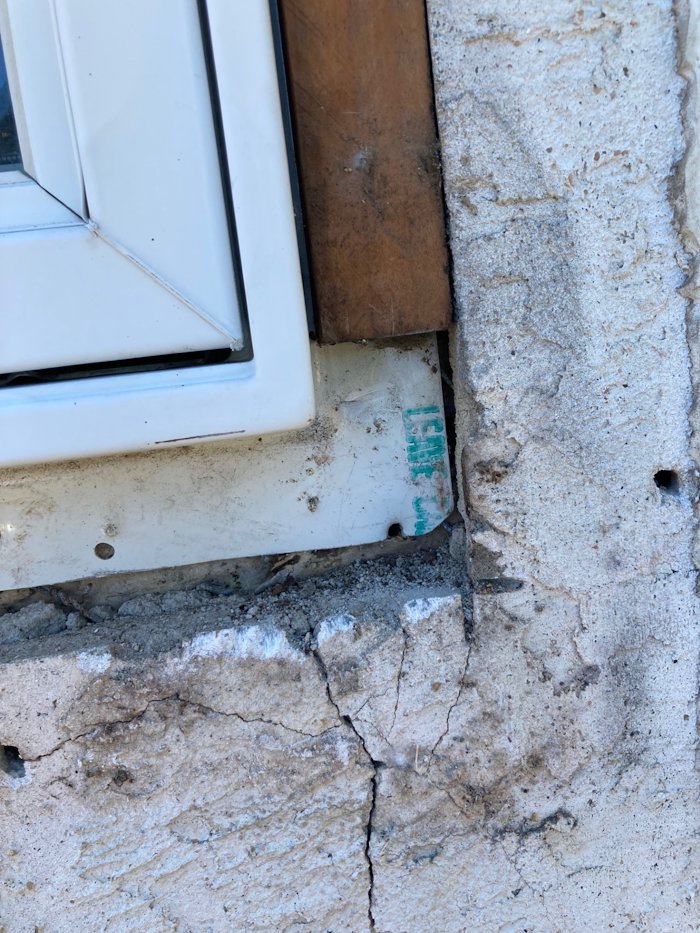
Thanks so much for the great question.
There are 3 big problems with the window. Fortunately, they can be resolved without pulling out the window.
Starting from the bottom, there is no sill. The stucco is out past the window, so any water that runs down the window will run right into the wall. The bottom of these Andersen windows are rounded, so water runs back into the wall more freely. The newer Andersen windows are better. One day I'll tell the story about when I went to Andersen windows to complain about the windows and make suggestions on how they improve their windows.
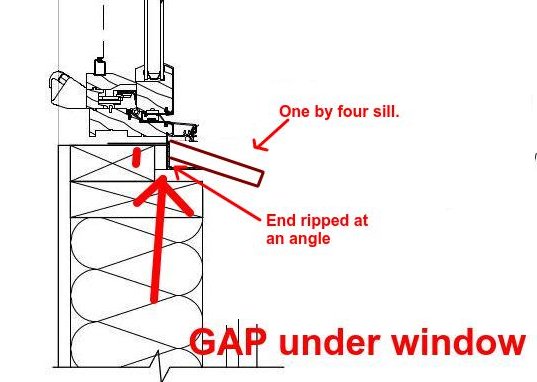
Here's an example of a one by four sill. This could be PVC, wood to match your unpainted wood, or even stucco. The ends of the sill should project out an inch or so past the sides of the trim on the sides of the window. You already have a gap below the window. This should give you about a 15o angle.
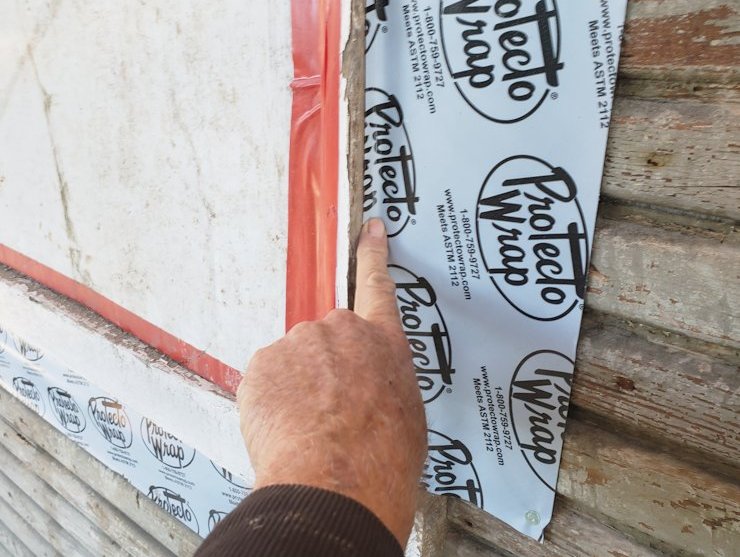
The sides of the window have open gaps. This can be sealed by using protecto-wrap, or what have you, folded against the side of the window.
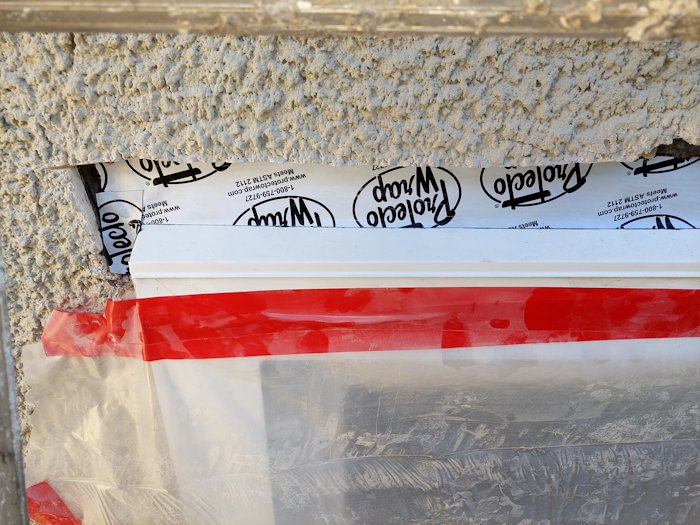
The stucco over the trim on top needs to be cut back for flashing. The top of the flashing needs to be nailed over the sheathing and the top flange sealed with tape. Note the protecto tape is cut off leaving the edge of the stucco exposed for a good bond for the patch. The side can be done the same way. The sides can be filled in with mortar before putting on the trim, however, the cement will need to be drilled. Filling with mortar isn't necessary, but it is helpful.
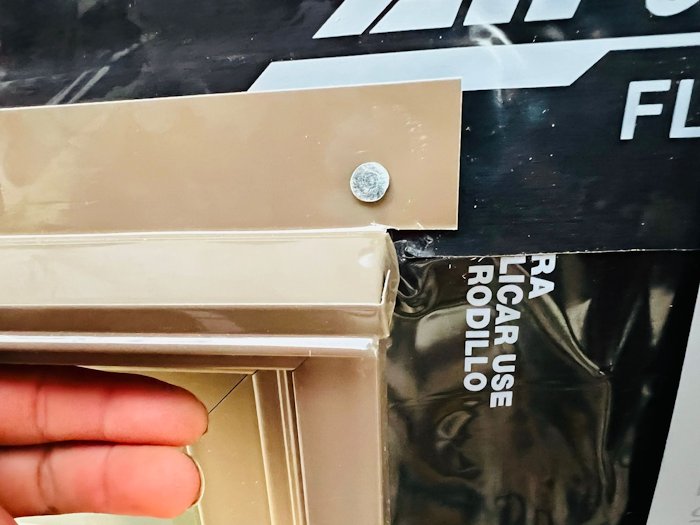
This is official Andersen window flashing. Andersen sends flashing in cardboard mailing tubes. What I am showing here is the flashing needs to be sloped down away from the wall. The flashing is cut a little long and folded over the sides. You can get prebent window flashing from Home Cheapo. The 1 5/8" drip molding flashing should work good for this.
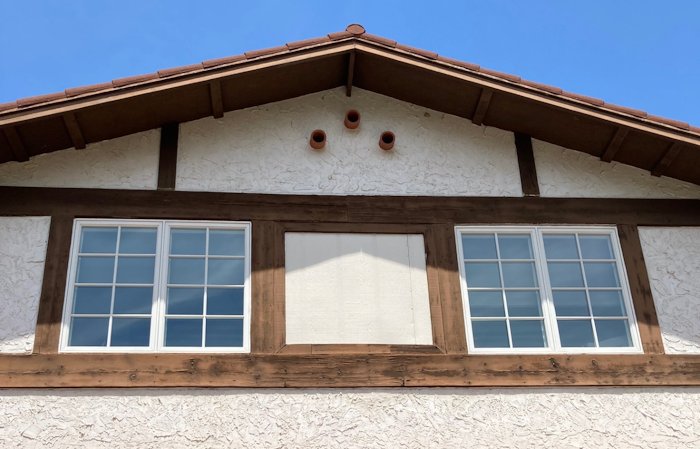
A view of the top floor windows.
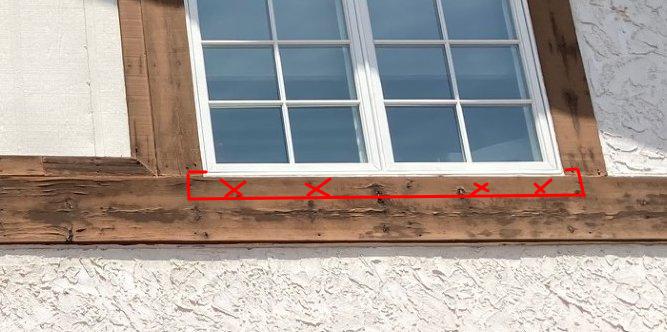
Here is my plan for a sill on the top floor. This area is cut out carefully and a wood sill put in. This is important because water is running into the house. It is debateable if you should do the sides. These top floor windows are under an overhang, so it may be alright.
This can all be done with no caulking and it won't leak.